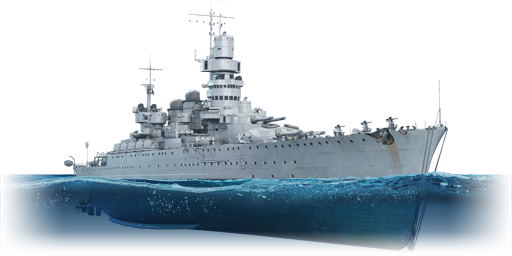The RN Duilio, also known as the RN Caio Duilio, is the sister ship of the previous battleship, RN Andrea Doria, laid down on 24 February 1912, launched on 24 April 1913, and completed and entered into service on 10 May 1915. The ship took part only in exercises, the ship did not see any operations or missions because naval supremacy in the Mediterranean was in favour of the Allied Powers. It was later refitted in the Ansaldo Shipyard in Genoa from 1937 until her return to service on 15 July 1940. The RN Duilio got one of the most extensive modernisations that was ever given to a dreadnought, including changes to the hull, powerplant, and armaments, resulting in a vessel that was almost unrecognisable as compared to before. The RN Duilio took part in several activities during WW2, though the ship never got a chance to engage another surface target and arguably the most interesting part of its service life was when it was torpedoed in Taranto by the Royal Navy. The ship continued serving in the Italian Navy after the war and was decommissioned in late 1956, being sold for scrap the next year.
Introduced in Update "Sky Guardians", the RN Duilio is in its 1942 configuration. The ship's armament is strong, the main armament consisting of ten 320 mm guns with high penetration AP shells, a secondary armament of four 135 mm twin turrets, useful for destroying smaller targets such as destroyers and cruisers, and finally the anti-aircraft armament that in comparison to the RN Andrea Doria has been greatly enhanced, consisting of ten 90 mm cannons, nineteen 37 mm cannons and finally eight twin 20 mm cannons, provides decent protection from enemy aircraft. Its manoeuvrability and speed is also not bad for a battleship.















